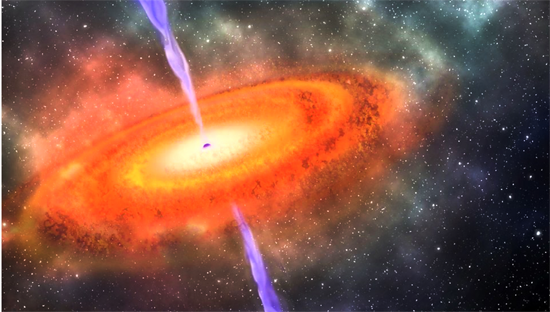
By Alison Snyder | Axios
Astronomers have found a black hole with a mass 800 million times greater than that of the Sun. The finding from 690 million years after the Big Bang, reported today in the journal Nature, may help scientists to better understand the evolution of the early universe when the first galaxies, stars and elements formed.
“It was the universe’s last major transition and one of the current frontiers of astrophysics,” astronomer Eduardo Bañados from the Observatories of the Carnegie Institution for Science said in a press release.
Some history: After a rapid phase of expansion immediately after the Big Bang, the plasma of electrons and protons in the universe began to cool about 400,000 years later and the particles clumped together to form neutral hydrogen gas. There was no light in the universe then until gravity formed matter into the first stars and galaxies. Their birth released ultraviolet light that pushed electrons out of the neutral hydrogen gas,
putting it in the form we still see the gas in today — and the universe in a new phase where it was transparent to light.











